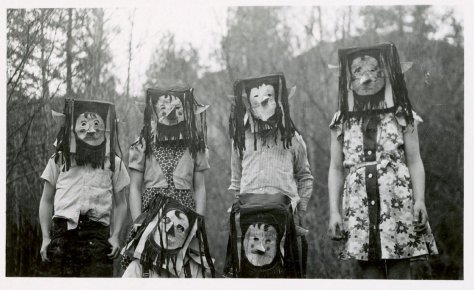The photographs in Haunted Air provide an extraordinary glimpse into the traditions of this macabre festival from ages past, and form an important document of photographic history. These are the pictures of the dead: family portraits, mementos of the treasured, now unrecognizable, and others.
Another through the tumblr wires. In this case, while these are indeed striking images from a historical point of view,* it’s really the portraiture point view which is more interesting to me here. Being a parent has reminded my of how important Halloween costumes are to us when we’re little. These are all family portraits which function as portraits despite, and because of, their uncanniness. The masks don’t hide anything. They never hide anything.
*Before Halloween became dominated by slickly-manufactured costumes and merchandising tie ins.
I don’t have much more to add which isn’t already covered by @kukkurovaca’s writing on Meatyard and hope that this post encourages him to migrate some of those over to this blog.

































![Week 8: [Crate Opener]](https://live.staticflickr.com/6118/6286879239_e6e37ba0bf_z.jpg)
